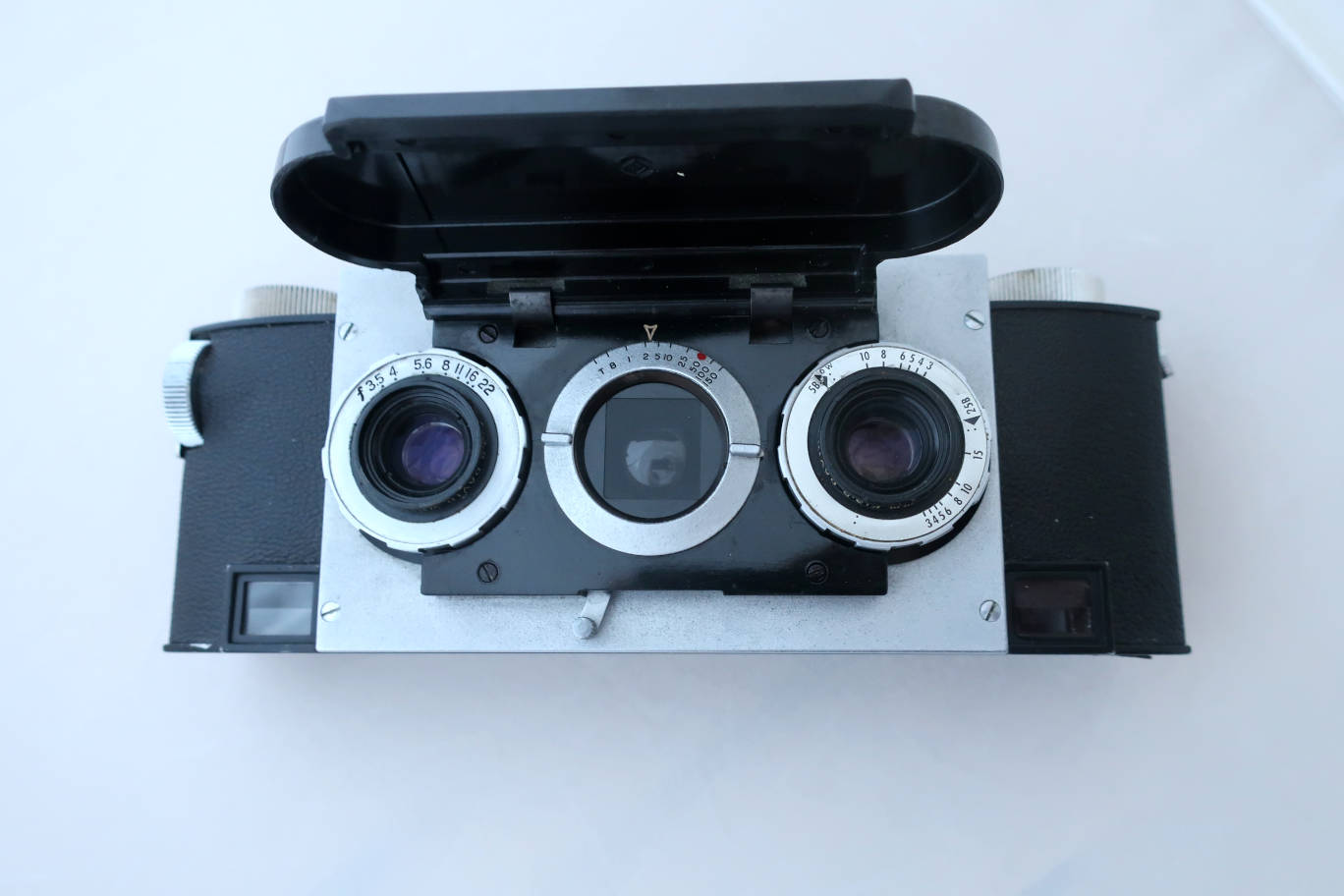OddCameras.com
Stereo Realist
The Stereo Realist Camera was introduced in 1947 and stayed in production until
about 1971, made by David White Co., Milwaukee, WI, USA. There were several models
(or variations) during this period. The model presented is an earlier
model without double exposure prevention. The Stereo Realist was probably the most popular stereo camera.
The camera uses 35mm slide
film. A
36 exposure film gives 28 pairs of stereoscopic photos. It uses the 5P format (5 perforations or holes or sprockets), picture size is 24x23, a portrait or near square format.
The "European" 7P format, picture size 24x30 mm, is a landscape format.
The Stero Realist format became a standard and was later called
"American" format.
The
camera has manual settings, but it's standard and it's easy to use. In
opposition to most 35mm stereo cameras, it has a rangefinder.
Size: 175 x 65 x 59 mm (W x H x D)
Weight: 820 gr
Image Format:23.42 x 22.40 mm (Wikis got it wrong!)
Lenses: David White Anastigmat, 1:3.5/45 mm
Aperture: F3.5 to F16
Shutter: lamellar, behind the lens, B, T, 1-1/150
Closest focus: 45cm (!)
Hot shoe, rangefinder, film transport warning
Some pictures:
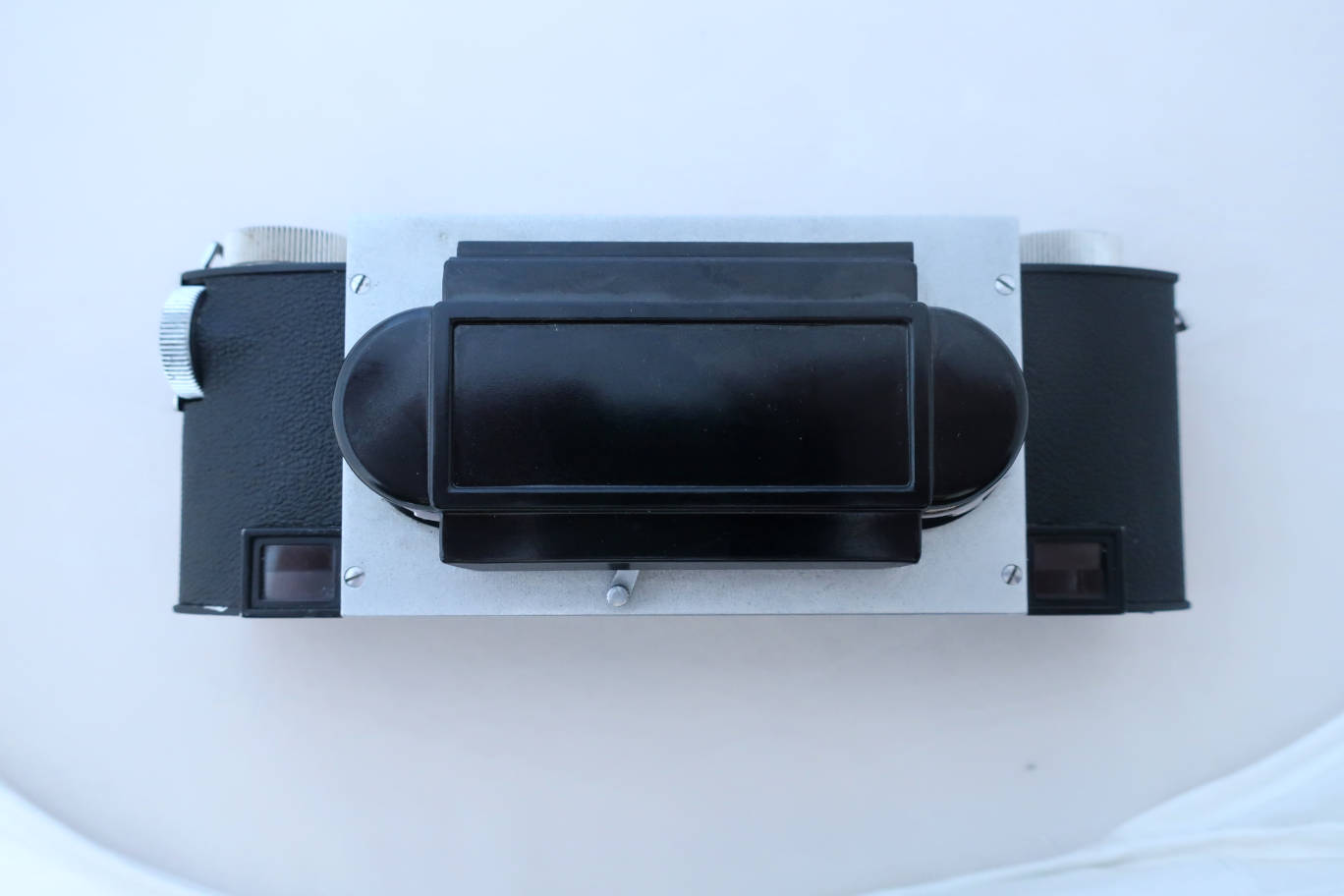
Camera front, lenses protected.
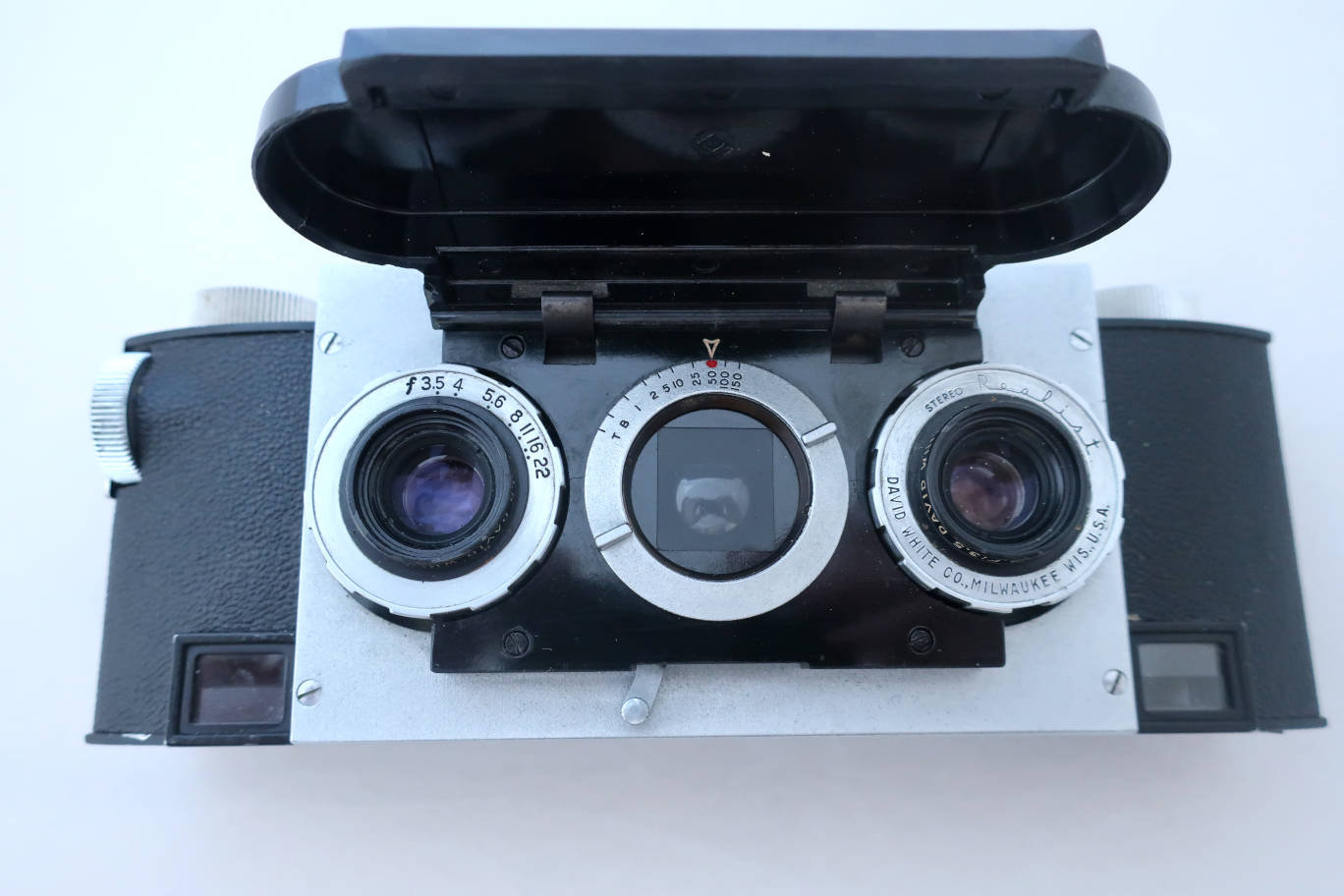
Camera
front. 2 lenses, around the lenses: aperture setting, coupled for both
lenses. Viewfinder lens in the middle, around it: speed setting. Please
set speed before cocking the shutter. Under the viewfinder lens:
shutter cocking lever, at the bottom: to the right and left:
rangefinder windows with a wide basis. Up left: focussing wheel.
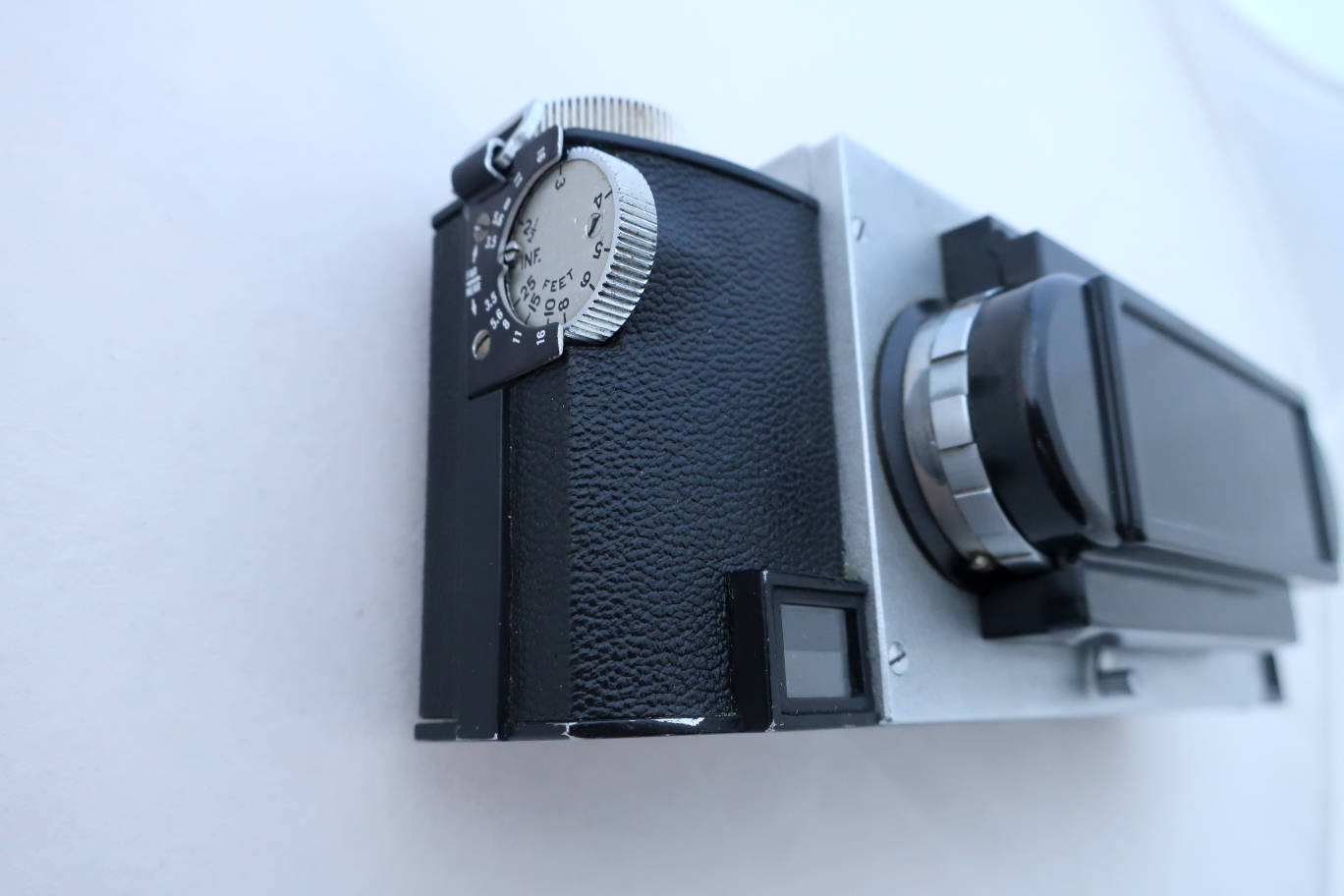
Distance setting wheel and DOF indications.
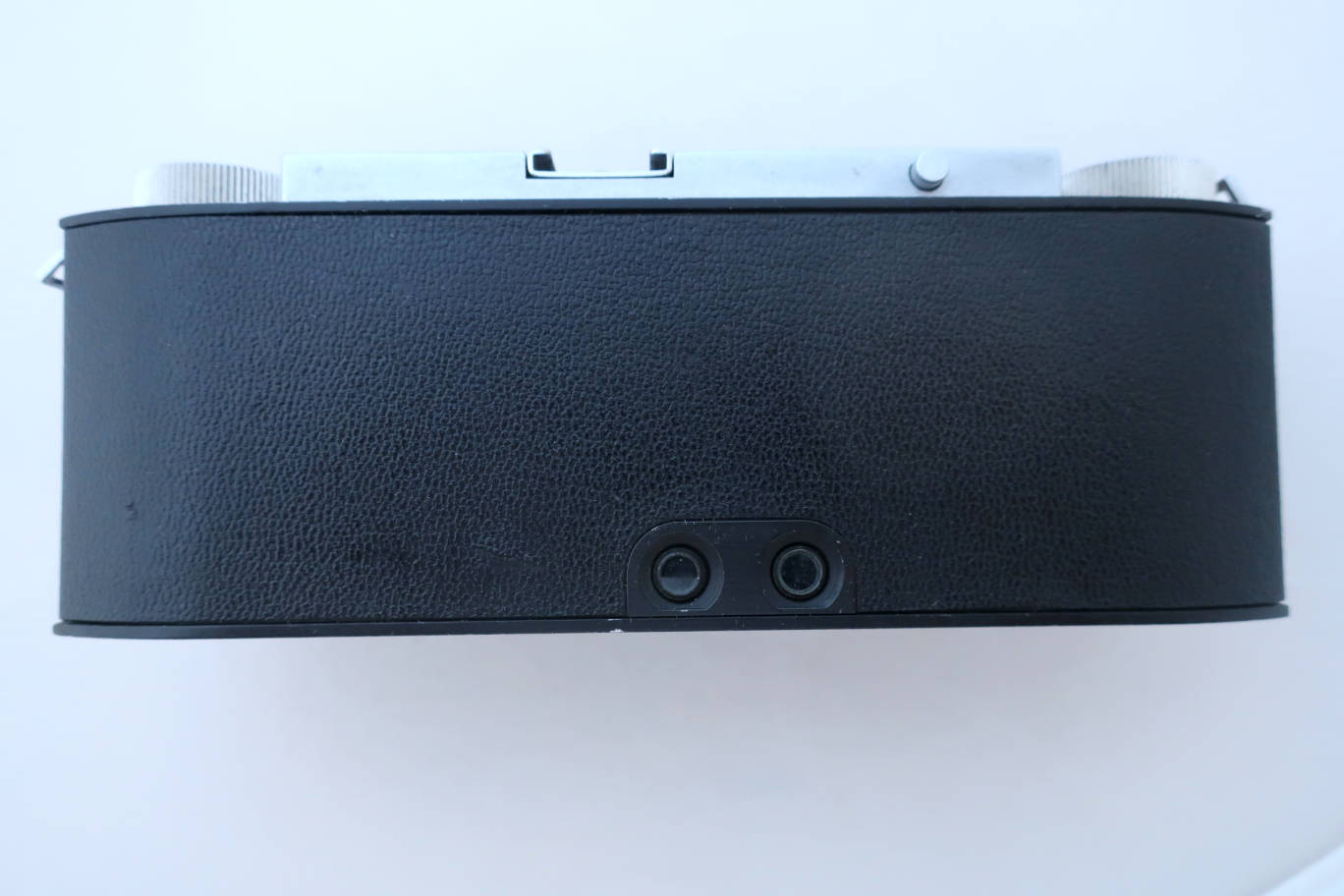
Camera
back. Tiny viewer and separate rangefinder at the bottom, old Leica
style. At the top of the housing: film advance unlock button.
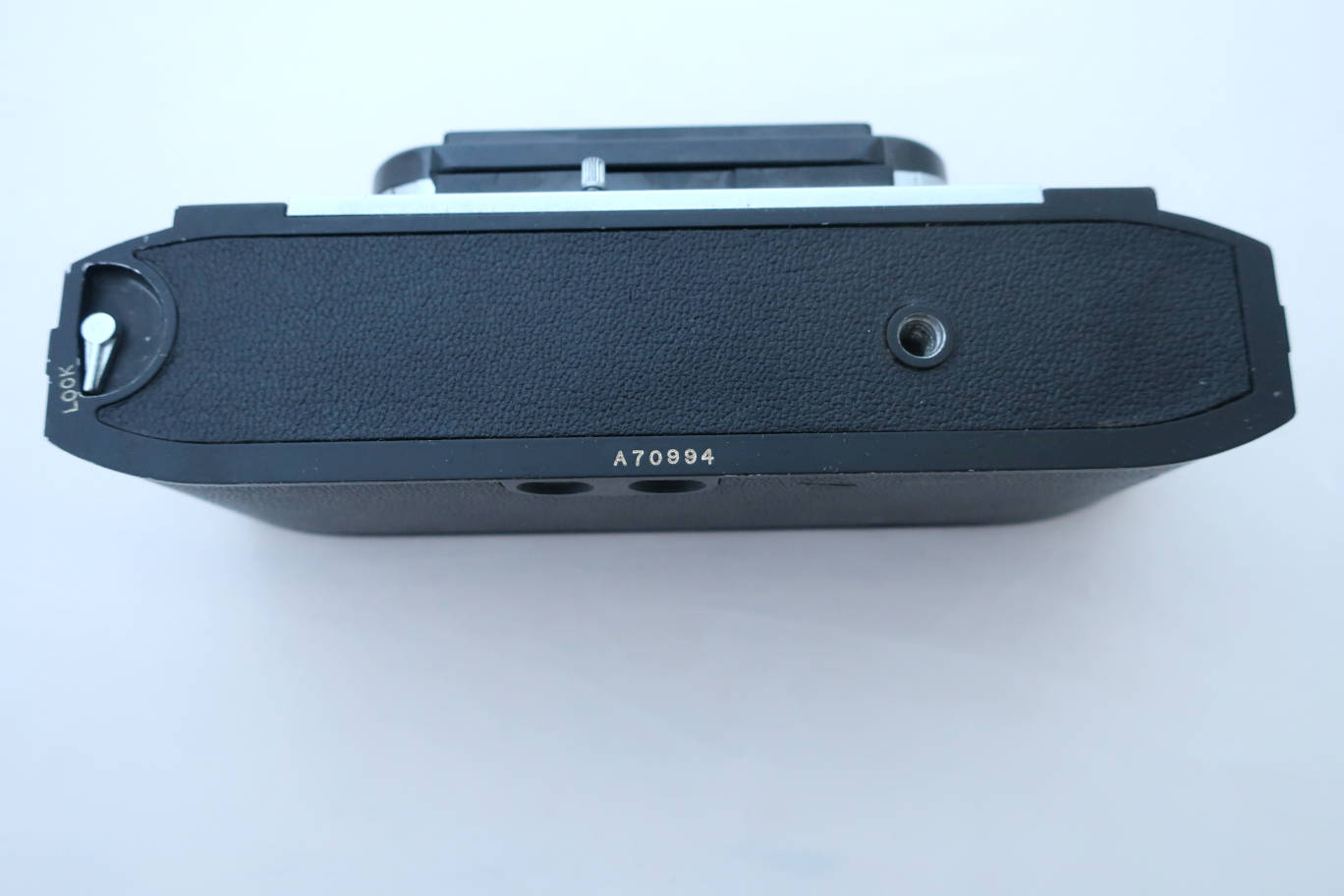
Camera
bottom. Tripod socket. Back unlock.
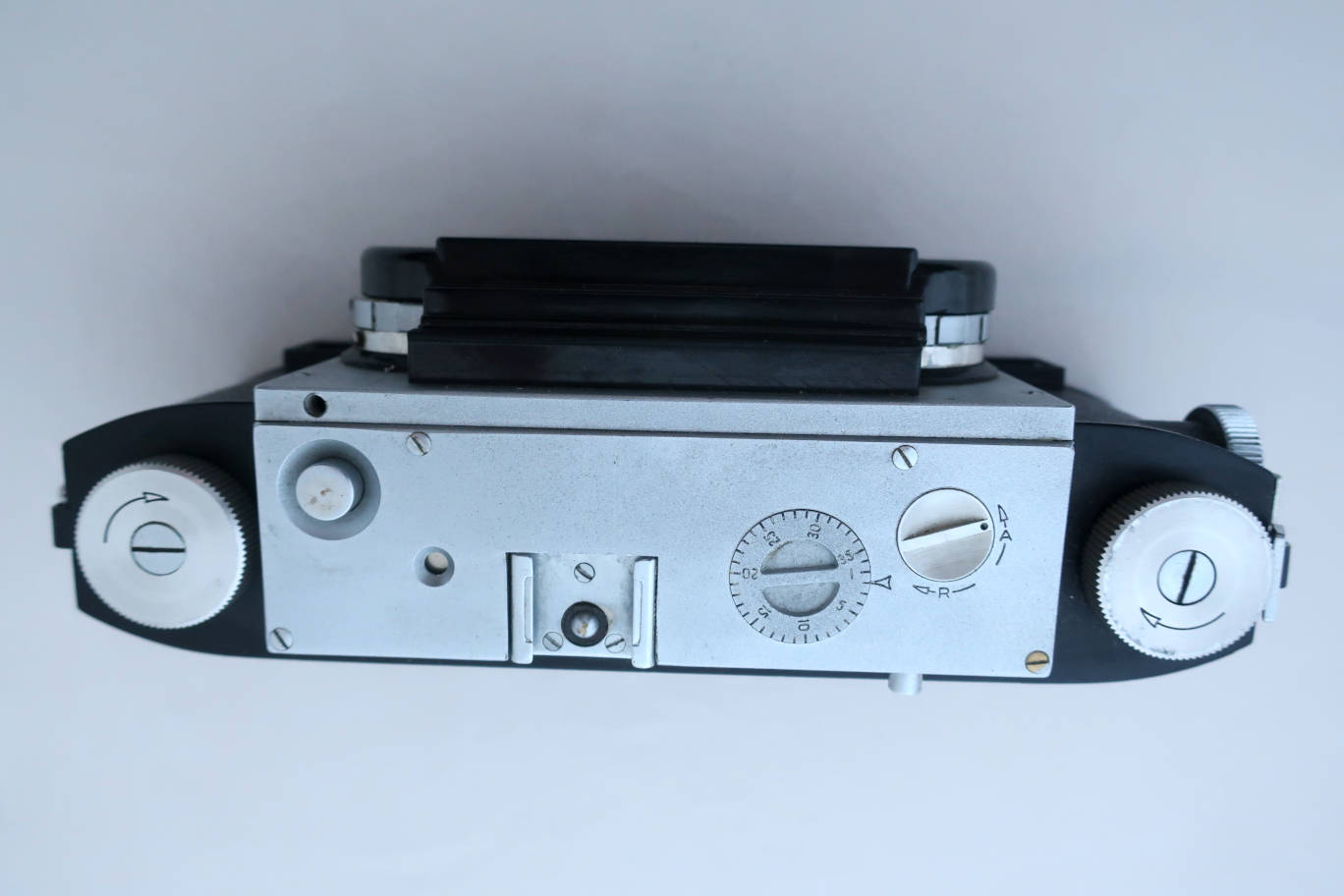
Seen
from above. Rewind. Shutter release and cable socket on the edge. Film wind warning. Hot shoe. Exposure counter. Rewind release. Film advance.
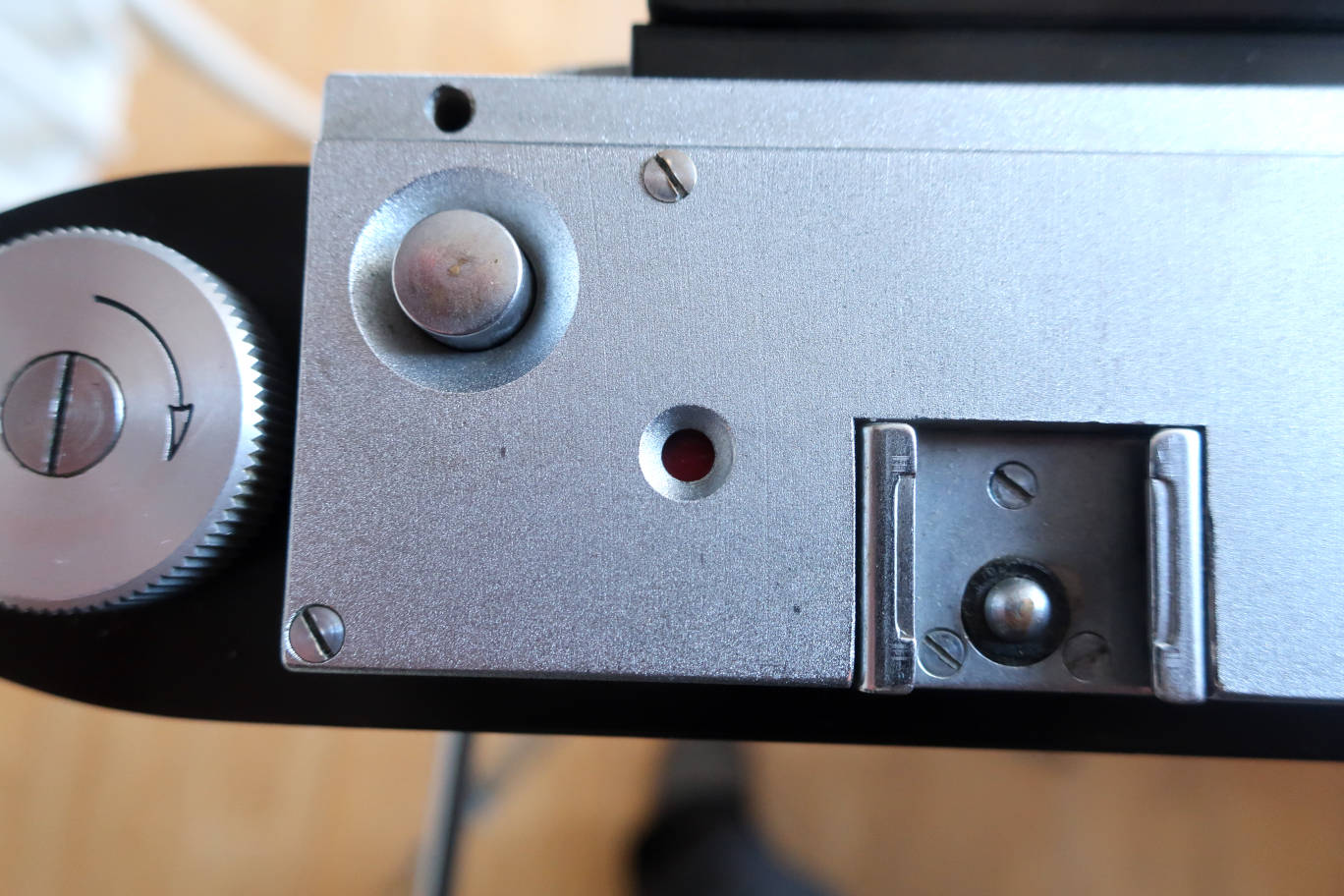
If you have released the shutter and not wound the film again, the indicator is red.
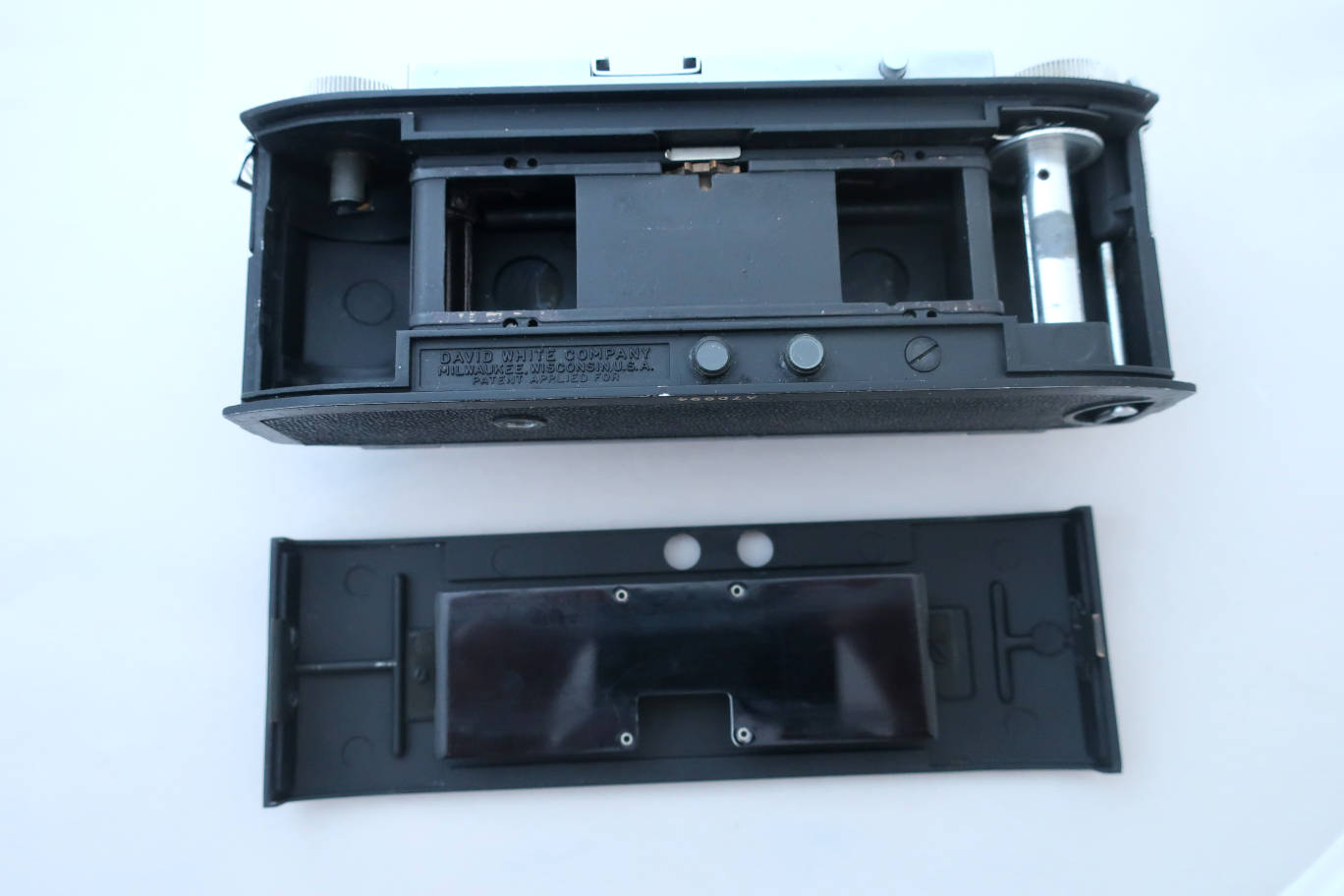
Camera back open.
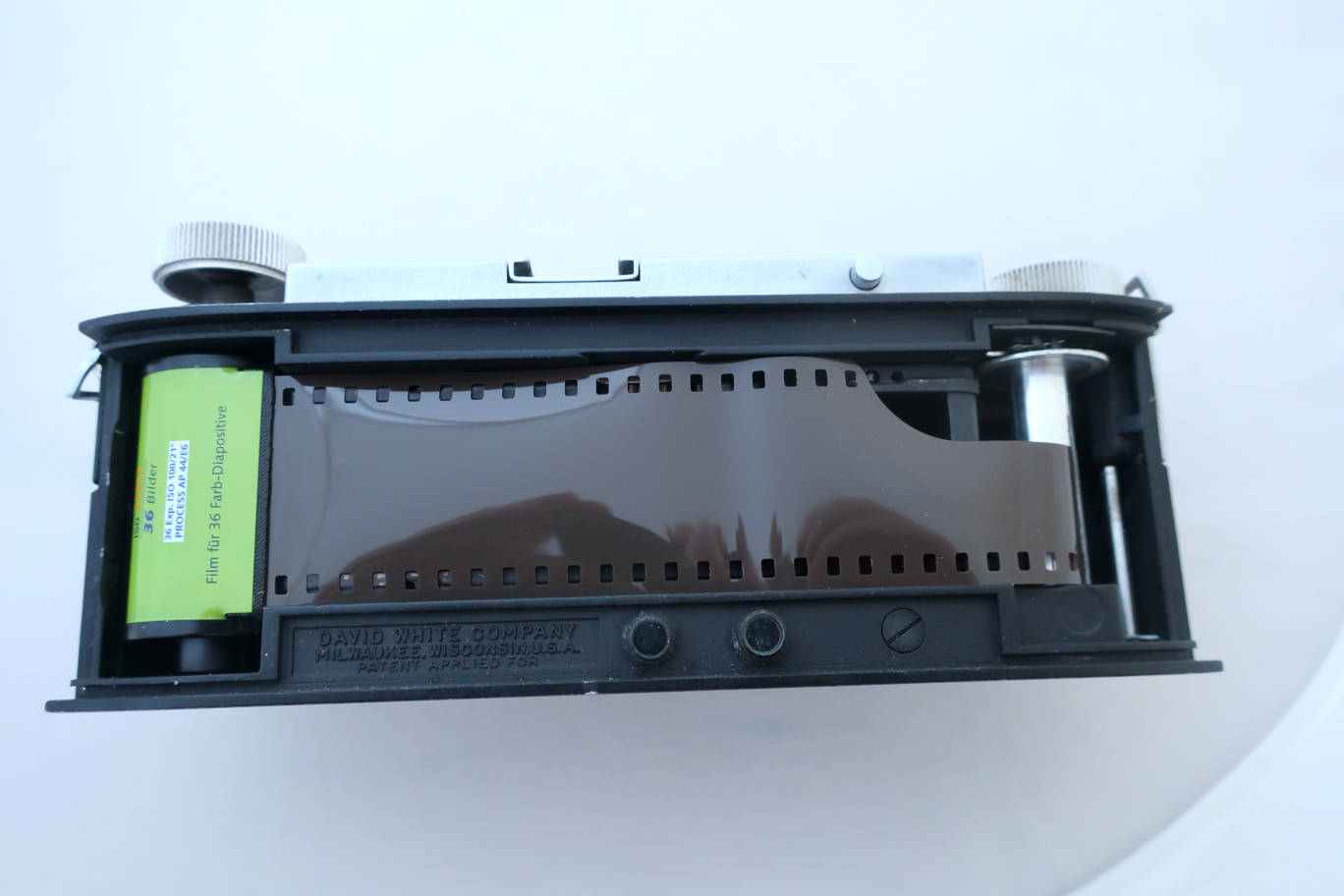
Inserting modern film just like that will not work. The film does not
engage into the sprocket wheel. In the old days the film leader was
much longer and the upper sprocket holes would still be to the left of
the sprocket wheel.
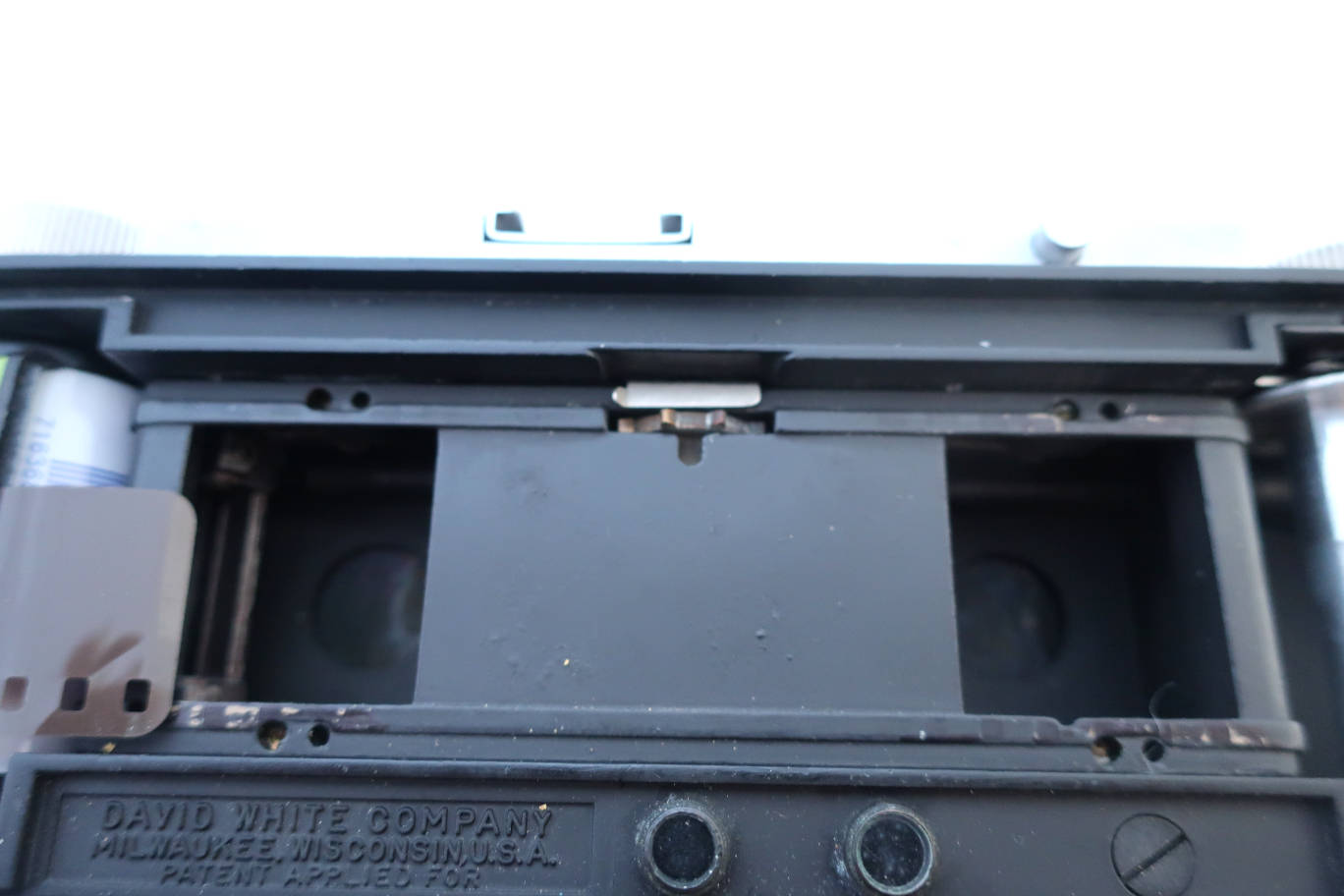
The sprocket wheel has a catch to lead the film well over the wheel.
Look, whether the rewind unlock has be put to "A" again. Drop the film
canister into its place by lifting the rewind knob. The correct
procedure would be to cut out another 10 sprocket holes on the top of
the film. Then turn the sprocket wheel with your fingers until a white
dot shows (very old models have none). Insert the leader into the slit
in the winding spool. It only goes in a few mm, with thin film
use a tiny patch of tape to secure. Close the camera and wind until it
stops (should not be long). Press and hold the wind release button,
turn a few mm and release the button. Wind on until it stops again.
Repeat another 2 times. You are ready for the first photo. Set the
counter to "1".
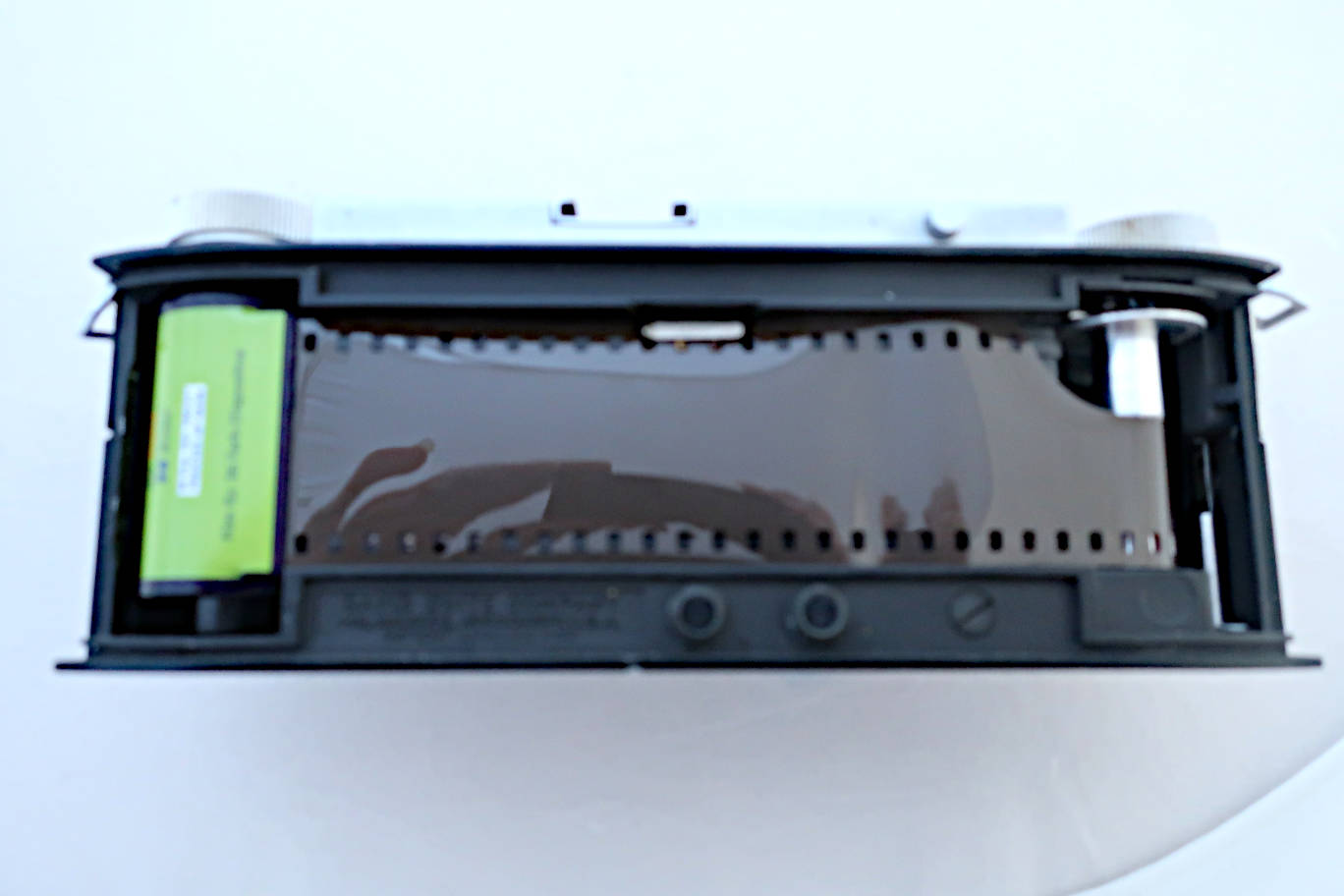
I do not cut the film leader. I leave the rewind unlock on "R" to keep
the sprocket wheel free turning. I lead the film under the catch and
its leader into the spool. Then I close the back, set the rewind unlock
to "A" and start winding until it stops. Repeat winding 3 times and you
are ready. Don't forget to set the counter to "1".
The
camera is easy to use. Set speed and aperture according to your meter
or estimations. Cock the shutter. Use the rangefinder window to measure
the distance. There are 2 tiny, tiny half-windows which are to be
matched. This works with good light and contrasty subjects. I case of
doubt use approx. distance and a small aperture, DOF is quite wide.
Frame with the viewer and shoot. Wind to the next photo.
Most cameras from the 50s onwards have double exposure prevention, mine
hasn't. In case there is a knob to pull on the back, on the upper edge
at the hight of the shutter button to make double exposures. If you use
hyperfocal settings and small apertures, it's a point and shoot
stereo camera. A very nice find.
There
is a wide range of viewing accessories still available. Stereo Realist
viewers are easy to find, so are the cardboard frames for the photos.
This is well an advantage, other systems more difficult to put up.
My camera came with a so called flash guide ring. They were given out
for free by the dealers and had to be installed carefully aligned. Once
you have measured the distance via the range finder, it indicates the
F-stop to set without calculation. On the picture 8 feet need F 5.6
with a 5B flash bulb. The same F 5.6 would be fine for 10 feet with a
25B flash bulb. If you look closely, you can see the tiny marking point
at the 10 feet mark for the 25B scale. As flash bulbs are no longer
available, I peeled
it off.
